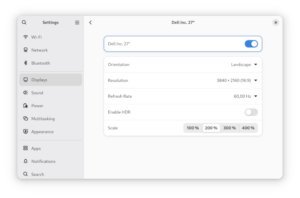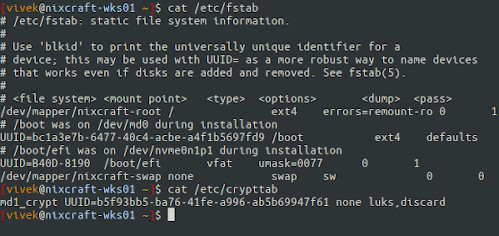
In today’s rapidly evolving digital landscape, the concept of endpoint has significantly extended beyond traditional workstations and servers to include a plethora of cloud resources. From API interfaces to virtual machines and databases, these cloud endpoints are integral to modern businesses, serving as the frontline in both operations and security.
However, this frontline is continuously under attack from a multitude of threats, including phishing, malware, ransomware, and more. As cloud adoption accelerates, so does the need for robust endpoint protection measures specifically designed for these cloud-native scenarios. This article introduces cloud endpoint protection, breaking down its essential components such as Next-Generation Antivirus (NGAV) and Endpoint Detection and Response (EDR), and discussing best practices to protect cloud endpoint against the cybersecurity threats they face.
API Endpoints
API endpoints are interfaces that facilitate interaction between a software application and the rest of the software world, including other software applications and users. Given their role, they are often targets for attacks such as Distributed Denial of Service (DDoS), Man-in-The-Middle (MITM), and others. By using cloud endpoint protection, such attacks can be mitigated, ensuring the secure operation of the API endpoints.
Virtual Machines (VMs)
VMs are another common endpoint in the cloud. They are essentially digital versions of physical computers, providing the same functionality. VMs can be exposed to various threats, including malware, unauthorized access, and data breaches. Cloud endpoint protection tools can help protect these VMs by providing capabilities such as intrusion detection and prevention, firewall protection, and regular vulnerability scanning.
Databases
Databases are cloud resources that store large amounts of data, often sensitive and mission critical. Cloud databases can provide direct access to large amounts of sensitive data if not properly secured. For this reason, databases should be secured with cloud endpoint protection measures, including strong encryption and robust access controls.
Storage
Cloud-based storage systems are another resource that can be targeted by various types of attacks, including data theft and ransomware attacks. Using cloud endpoint protection, these storage endpoints can be secured, ensuring the safety of the stored data.
Phishing Attacks
Phishing attacks are a prevalent threat facing cloud endpoints. In these attacks, cybercriminals attempt to trick individuals into revealing sensitive information such as usernames, passwords, and credit card details by pretending to be a trustworthy entity. They often do this by sending seemingly innocuous emails that contain malicious links or attachments.
Phishing attacks are particularly dangerous because they prey on human vulnerabilities, making them difficult to prevent through technological means alone. This highlights the importance of user education in any comprehensive cybersecurity strategy.
Malware and Ransomware
Another significant threat facing cloud endpoints is the proliferation of malware and ransomware. Malware is a broad term that encompasses various types of malicious software, including viruses, worms, Trojans, and spyware. These malicious programs are designed to infiltrate and damage computers without the users’ consent.
Ransomware, on the other hand, is a type of malware that encrypts a victim’s files and demands a ransom to restore access to them. The rise of ransomware has been particularly concerning due to its ability to cause significant disruption to businesses and even critical infrastructure.
Distributed Denial of Service (DDoS)
Distributed Denial of Service (DDoS) attacks are another threat that cloud endpoints must contend with. In a DDoS attack, a malicious actor overwhelms a network, service, or server with a flood of internet traffic, rendering it inaccessible to legitimate users.
While DDoS attacks do not typically result in the theft of data, they can cause significant disruption to business operations. Moreover, these attacks can serve as a smokescreen for other, more insidious attacks, further highlighting the importance of robust cloud endpoint protection.
Privilege Escalation
Privilege escalation is a type of cyber attack where an attacker exploits a bug, design flaw, or configuration oversight in an operating system or software application to gain elevated access to resources that are usually reserved for privileged users.
In the context of cloud endpoints, privilege escalation attacks can be particularly damaging. If an attacker gains elevated privileges in a cloud environment, they could potentially gain access to all data and resources in that environment, posing a significant security risk.
Cloud Misconfigurations
Finally, one of the most common threats facing cloud endpoints arises not from malicious actors, but from within organizations themselves. Cloud misconfigurations, such as unsecured data storage buckets or overly permissive access controls, can provide an open door for cybercriminals.
These misconfigurations can often go unnoticed until it’s too late, making it critical for organizations to have visibility into their cloud environments and to continuously monitor them for any changes that could potentially expose them to risk.
Endpoint protection solutions are not new, but in recent years most vendors have extended them to support cloud environments. Here are the main components of endpoint protection solutions you can use in your cloud environment:
NGAV (Next-Generation Antivirus)
Unlike traditional antivirus software that relies on signature-based detection, NGAV utilizes advanced technologies like artificial intelligence and machine learning to identify and block a wide range of threats. It can detect malware, ransomware, and even zero-day exploits that may evade traditional antivirus solutions.
EDR (Endpoint Detection and Response)
EDR security solutions provide continuous monitoring and response to advanced threats. They collect data from endpoint devices and analyze it for signs of threats. If a threat is detected, EDR solutions can quickly respond by isolating the affected endpoint, thereby preventing the threat from spreading within the network.
Threat Intelligence
Threat Intelligence is a proactive security measure that involves gathering and analyzing information about emerging threats. With this information, businesses can better anticipate potential attacks and respond quickly and effectively. In a cloud endpoint protection solution, threat intelligence feeds into other components like NGAV and EDR, enhancing their threat detection and response capabilities.
Application Control and Sandboxing
Application control is a security technique that restricts the applications that can run on an endpoint. This technique reduces the attack surface and helps prevent malware and other malicious software from executing on the endpoint. Sandboxing, on the other hand, is a security mechanism that isolates potentially unsafe applications in a separate environment, preventing them from affecting the rest of the system.
Prefer Tools Supporting Behavioral Analysis
Behavioral analysis involves studying the patterns and tendencies of network traffic and device behavior to identify any anomalies that could indicate a potential security threat. By continuously monitoring these patterns, cloud endpoint protection can effectively detect and neutralize threats even before they cause any damage.
Behavioral analysis is particularly effective in combating zero-day attacks, which exploit previously unknown vulnerabilities. Traditional security solutions, which rely on signature-based detection, often fall short in detecting these attacks. However, by observing the behavior of applications and network traffic, behavioral analysis can identify these threats and take proactive measures to mitigate them.
Moreover, behavioral analysis also helps in identifying insider threats, which pose a significant risk to organizations. Since these threats come from within the organization, they often bypass traditional security measures. However, by observing the behavior of users and devices, behavioral analysis can detect unusual patterns and alert the security team.
Combine Endpoint Protection with Penetration Testing
Penetration testing involves simulating cyber attacks on your cloud endpoints to identify potential vulnerabilities that could be exploited by hackers. By proactively discovering these weaknesses, you can take necessary measures to strengthen your security before an actual attack occurs.
Penetration testing is a comprehensive process that covers various aspects of your IT infrastructure. It includes testing the security of your network, applications, and even the physical security of your IT assets. By conducting regular penetration tests, you can ensure that your cloud endpoint protection solution and other security practices are capable of defending against the latest cyber threats.
Least Privilege Principle
This principle dictates that users should be granted only the minimum permissions necessary to perform their job functions. By limiting the access rights of users, you can minimize the risk of unauthorized access to sensitive data and prevent potential security breaches.
The least privilege principle applies not only to human users but also to applications and systems. For instance, if an application only needs read access to a database, it should not be granted write access. This way, even if the application is compromised, the attacker would not be able to modify the data in the database.
Device Management
Effective device management is a vital component of cloud endpoint protection. With the increasing prevalence of bring-your-own-device (BYOD) policies and the use of personal devices for work, securing these devices has become a significant challenge for organizations. However, with proper device management, you can ensure the security of these endpoints and prevent them from becoming a gateway for cyber attacks.
Device management involves keeping track of all the devices connected to your network, ensuring that they are updated with the latest security patches, and enforcing security policies on these devices. With cloud endpoint protection, you can manage all these tasks from a centralized console, making the process more efficient and less time-consuming.
Plan for Incident Response
Despite the best security measures, incidents do occur. Therefore, having a well-defined incident response plan is a crucial part of cloud endpoint protection. An incident response plan outlines the steps to be taken in the event of a security breach, including identifying the breach, containing the damage, eradicating the threat, and recovering from the incident.
A good incident response plan should also include a communication strategy for informing the relevant stakeholders about the incident. This includes not only your internal team but also your customers, partners, and regulatory authorities, if required. By promptly communicating about the incident and the steps you are taking to address it, you can maintain the trust of your stakeholders and mitigate the reputational damage.
Integrate with Other Security Solutions
Finally, it’s important to integrate cloud endpoint protection with other security solutions in your organization. This includes your firewall, intrusion detection system (IDS), intrusion prevention system (IPS), and other security tools. By integrating these solutions, you can create a layered defense strategy that provides comprehensive protection against various cyber threats.
Integration also enables these solutions to work together more effectively. For instance, if your IDS detects a potential threat, it can alert your cloud endpoint protection solution, which can then take appropriate action to neutralize the threat. This collaborative approach enhances your security posture and ensures faster response to threats.
Conclusion
The cloud has revolutionized how businesses operate, offering unparalleled flexibility, scalability, and cost-efficiency. But this evolution has also ushered in a new set of security challenges that require specialized solutions. Cloud endpoint protection serves as a pivotal layer of defense in mitigating risks that traditional security solutions might not adequately address.
With key components like NGAV, EDR, and threat intelligence, organizations can go beyond mere detection to adopt a proactive, responsive, and integrated approach to cybersecurity. By implementing best practices such as behavioral analysis, penetration testing, and least privilege access controls, businesses can build a resilient cloud environment capable of withstanding the modern threat landscape.
By Gilad David Maayan





